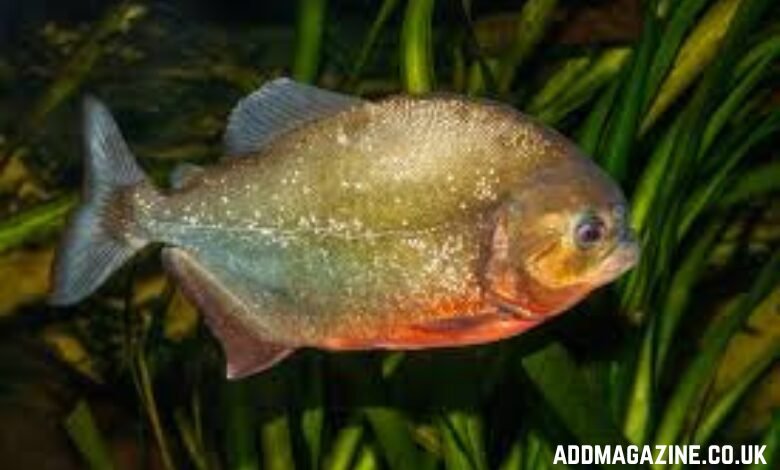The term “piragnia” is often met with intrigue, especially by those interested in aquatic life. While it sounds like a variation of the notorious “piranha,” the reality surrounding the word is somewhat shrouded in confusion. Many people come across the term when searching for information about the ferocious, carnivorous fish found in the waters of South America. In some instances, “piragnia” is mistakenly used as a reference to the famous piranha, though the two terms may not always be entirely synonymous. This post aims to clarify the true meaning of piragnia, separate fact from fiction, and shed light on the often misunderstood nature of these fascinating creatures.
What is Piragnia?
Piragnia is generally considered a term closely related to piranhas, but its exact origins and meaning can vary. The name “piragnia” likely stems from regional dialects, mistranslations, or misinterpretations of the word “piranha” over time. It is not uncommon for local variations to emerge in language, especially in communities where indigenous languages and other cultural influences blend with mainstream usage.
The term piragnia seems to have appeared as a result of slight deviations in pronunciation or spelling, often influenced by pop culture references, informal writings, or even misunderstandings passed along through word of mouth. The fish to which the term refers is not a distinct species but more likely an alternate name or a variation of piranha, a term that is well recognized for describing a fierce, carnivorous fish.
Piranhas vs. Piragnia: Are They the Same?
At the heart of the confusion is whether piragnia refers to the same species as piranha. To clarify, piragnia is often just an alternative or regional name for piranhas, particularly when the term is used informally. Piranhas, known scientifically as Pygocentrus and Serrasalmidae species, are part of the same group of freshwater fish. While there are several types of piranhas, they share many common characteristics, including their sharp teeth, powerful jaws, and aggressive feeding behavior.
However, piranhas—despite their fearsome reputation—are not mindless killing machines. In reality, they are opportunistic feeders, often scavenging the waters for easier meals rather than actively hunting and attacking large prey. The portrayal of piranhas as mindless killers is largely a result of sensationalized portrayals in movies, such as the famous “Piranha” horror films, and literary works that emphasize their aggressive nature.
Piranhas in Their Natural Habitat
Piranhas (or piragnia) are primarily found in the river systems of South America, particularly the Amazon and Orinoco basins. These rivers are ideal habitats for piranhas, providing a warm, nutrient-rich environment in which they can thrive. The slow-moving waters and shallow streams, often laden with vegetation, offer the perfect conditions for feeding, breeding, and hiding from potential predators.
During the rainy season, when the rivers flood, piranhas often occupy flooded forests and other areas that are teeming with smaller fish and invertebrates. The piranha’s diet mainly consists of smaller fish, seeds, and plant matter, with occasional opportunities for scavenging on dead animals. Though they are capable of eating larger animals, this typically only happens when food sources are scarce.
Myths and Misunderstandings about Piragnia/Piranhas
One of the most persistent myths about piragnia (and piranhas in general) is that they are bloodthirsty, aggressive fish that will attack anything that enters the water. Films and novels have exaggerated this image, portraying them as swarming packs of sharp-toothed predators capable of devouring a human body in seconds.
In reality, piranhas are shy creatures that tend to avoid larger animals, including humans. While they are capable of inflicting injury if they feel threatened or if food is scarce, attacks on humans are rare. Piranhas are generally not a significant threat to humans, and most species of piranhas are far more focused on smaller, easier prey.
That said, there are some species, such as the red-bellied piranha (Pygocentrus nattereri), that have a reputation for being more aggressive. These piranhas are more likely to attack in certain conditions, such as when food is limited or when they feel provoked. However, the vast majority of piranhas are not the ferocious killers depicted in popular media.
Behavior and Ecology of Piragnia/Piranhas
Piranhas (or piragnia) are highly social fish, often living in schools that provide safety from predators and facilitate group hunting. These schools can range in size from just a few fish to large groups consisting of hundreds of individuals. Although piranhas are carnivorous, they are not always hunting for meat. They often rely on the abundance of plant matter and smaller fish for sustenance. In many cases, piranhas will feed on decaying organic matter or scavenger through the remains of other animals.
The species of piranha can vary in terms of their behavior and diet. Some piranhas are primarily herbivores, feeding on fruits, seeds, and plants, while others are opportunistic carnivores that feed on small fish, invertebrates, or even the occasional mammal if it becomes available.
Despite their reputation, piranhas serve an important ecological role in the Amazon and Orinoco ecosystems. By scavenging on dead animals and consuming excess plant matter, they help maintain the balance of the ecosystem, preventing the overgrowth of certain species and promoting biodiversity.
Physical Characteristics of Piragnia/Piranhas
Piranhas are generally small to medium-sized fish, with some species growing up to 12-15 inches in length. They have a laterally compressed body that is often silver or grayish with a reddish or orange underbelly, which gives some species their distinct color patterns. Their most notable feature is their sharp, triangular teeth, which are capable of inflicting significant damage when they bite.
The teeth of piranhas are arranged in a single row along their upper and lower jaws, and they are sharp enough to tear through the flesh of other animals. Their jaws are incredibly strong, allowing them to bite through tough materials such as bone or fish scales. However, despite their powerful jaws, piranhas do not actively seek out large prey. Instead, they are opportunistic feeders that scavenge and feed on smaller animals, as well as plants.
Conservation of Piragnia/Piranhas
While piranhas are not considered endangered, some species of piragnia are facing threats due to human activities. Deforestation, pollution, and overfishing are some of the major factors contributing to the decline of certain piranha populations. As the Amazon rainforest continues to be cleared for agriculture, the habitats of these fish are also being destroyed, leading to habitat fragmentation and a decline in food availability.
Conservation efforts are underway to protect the diverse aquatic ecosystems of South America, including the rivers where piranhas live. Environmental organizations are working to raise awareness about the importance of protecting these habitats and the species that rely on them, including piragnia (piranhas). The sustainable management of fisheries and the reduction of deforestation are key to ensuring the continued survival of these fascinating fish.
Conclusion
In summary, piragnia is a term that refers to freshwater fish found in the rivers of South America, and it is often associated with the more commonly known piranha. While the term piragnia may be a regional variation or misinterpretation of “piranha,” the underlying truth remains: piranhas are not the mindless, bloodthirsty killers they are often depicted as in popular culture. Instead, they are complex, social creatures that play an important role in maintaining the balance of their ecosystem.
Though piranhas have earned a reputation as dangerous predators, the reality is far more nuanced. They are opportunistic feeders, primarily consuming plant matter and small fish, and they prefer avoiding larger animals, including humans. By understanding the true nature of piragnia and piranhas, we can move past the myths and appreciate these remarkable fish for their role in the natural world.




